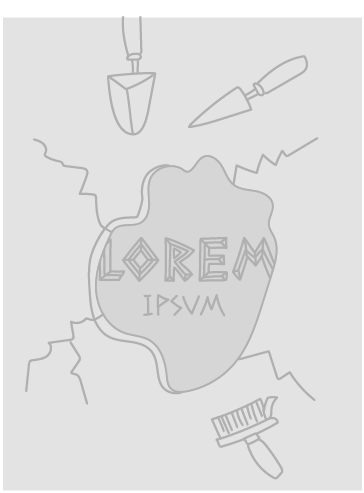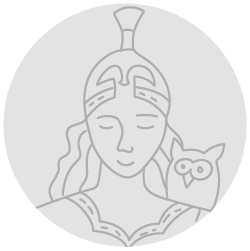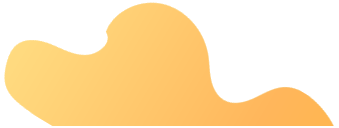Title of the work
Country of the First Edition
Country/countries of popularity
Original Language
First Edition Date
First Edition Details
Lisl Weil, Of Witches and Monsters and Wondrous Creatures. New York: Atheneum, 1985, 48 pp.
ISBN
Genre
Instructional and educational works
Picture books
Target Audience
Children
Cover

We are still trying to obtain permission for posting the original cover.
Author of the Entry:
Elizabeth Hale, University of New England, ehale@une.edu.au
Peer-reviewer of the Entry:
Miriam Riverlea, University of New England, mriverlea@gmail.com
Lisa Maurice, Bar-Ilan University, lisa.maurice@biu.ac.il

Lisl Weil
, 1910 - 2006
(Author)
Lisl Weil was born in Vienna, Austria. From an early age she liked to draw, and by the age of 16 her illustrations were published in local newspapers. She immigrated to the United States in 1939, being helped by New York connections who helped the young Jewish illustrator come to America. She lived in New York City, where she married Julius Marx. She established a successful career as an illustrator and writer. Her interest in music led her to work with symphony orchestras such as the Boston Pops and the Little Orchestra Society’s Young People’s Concerts, in which she drew illustrations and danced in response to the music: these “picture ballets” or “ballets with a crayon” toured around the United States. From 1963-1966, she hosted a television show called ‘Children’s Sketchbook.’ Weil illustrated over 100 books for children, for about half of which she wrote the text.
Sources:
openlibrary.org (accessed: January 19, 2019);
goodreads.com (accessed: January 19, 2019);
snaccooperative.org (accessed: January 19, 2019);
librarything.com (accessed: January 19, 2019; includes image of Weil drawing and dancing);
childrensmediaarchive.blogspot.com (accessed: January 20, 2019, includes image of Lisl Weil);
archive.org (accessed: January 20, 2019).
Bio prepared by Elizabeth Hale, University of New England, ehale@une.edu.au
Summary
In this informational picture book, Weil takes young readers on a tour of mythical creatures from around the world. She opens by explaining the role of mythical creatures as providing answers for the things that happen that cannot be explained. "Some of these creatures were good; some were bad. Some were like animals; some were like people . . . Every country, every different group of people, had their own wicked monsters and wondrous creatures that became a part of the stories that were told and the ideas that were believed." (p. 5) After a brief discussion of the Egyptians’ belief in magical animals, and use of animals as important symbols (e.g. the lion and kingship, the sun god Ra and the phoenix), Weil moves on to the Greeks and Romans. She discusses the transformation of Zeus into an animal, i.e. a bull. "People who met animals that did odd things could not be sure if it was a real animal or a god." This description is accompanied by a winsome-looking bull cozying up to a startled looking Europa (p. 11). Another bull discussed is the Minotaur, which leads on to the Theseus story and a brief discussion of Ariadne, her abandonment on Naxos, and her eventual "comfort" found with Bacchus (p. 14). A "different kind of Greek monster" was Cerberus (p. 15), who is briefly described. In the illustration we see Charon ferrying souls towards Cerberus. Next is the Sphinx, who, when Oedipus solved her riddle, "was so angry at hearing the correct answer that she blew herself into a million pieces." (p. 16) A double-page spread of Pegasus follows, showing him creating a spring of water and leaping into the stars. Page 21 sums up a host of magical creatures: nymphs, Dryads, Oreads, Limoniades, Naiads, Nereids, the Pleiades, all notable for their lighthearted enjoyment of dancing. In contrast are Pan and the fauns, helpful to shepherds and huntsmen, but also famed for their trickery. Then follows the Sirens ("among the nymphs who were not very helpful to people"), and their encounter with Odysseus. (p. 22)
Weil next leaves Greece and Rome for Germany and France, continuing the Siren myth – the German Lorelei, and the French Undine (p. 25), then comments that "some creatures are a part of the legends of every land" (p. 27), noting the Indian and Chinese origins of the unicorn before it spread to Europe. Dragons, too, "have appeared everywhere in the world… at least that is what stories and legends would have us believe." (p. 28) From Hercules slaying the dragon who guards the golden apples, to the wise dragons of China and the Far East, to the fierce dragons of Europe, to the dragon parades of China and France (Tarascon), Weil covers a range of dragon myths in quick succession, before transitioning to someone who was "not a dragon, but as strange and as fierce," the Russian Baba Yaga (p. 32). Remaining in Russia, Weil discusses the firebird of folk tales, and Stravinsky’s ballet of the story.
The book concludes by looking at big and small "monstrous and wondrous creatures": the leprechauns of Ireland, the Heinzelmannchen of Germany, the giants of Scandinavia, Greece, and the American Indians. She discusses Grendel, of Anglo-Saxon myth and the Greek Cyclops, before moving on to the idea of evil creatures and different ways people cast out evil (Japanese casting of dried beans; South African and American Indian masks). Space is next given to witches, in which Weil explains that witches can be good or bad, that they appear in Shakespeare’s Macbeth, and discusses briefly the Salem witch trials in Massachusetts in 1692, and the famous witch of Hansel and Gretel. Finally, she sums up fairies, gnomes and elves, and other creatures who may be kind or may trick or deceive humans.
The book concludes with a general reflection on the purpose of mythical creatures, which "help us to understand ourselves and the things we do and say. In all of us there is good and bad, and the monsters and wondrous creatures we read about express some of our feelings about things that happen to us" (p. 48).
Analysis
Of Witches and Monsters and Wondrous Creatures takes readers on a fast tour of the mythical creatures from around the world. Like many such books it lingers among Ancient Greek myths, suggesting that Weil is either better versed in these myths, or she (or her publisher) is more confident of the book’s reception if it contains many classical myths. While its overall coverage may seem somewhat rushed, probably because of the limitations of the format (many children’s books are published in multiples of 12 pages, owing to printing costs), of interest are the links among figures, concepts, and themes, and the attempt to explain the reasons for mythical creatures in the collective imaginary. The illustrations are light, lively, and witty, using quick brush strokes, an unusual palette of pale blue, yellow and violet (again, the restricted palette is likely in response to publishing costs). Like other of Weil’s books, there is a humorous tone to the work, a sense of the ironies of human behaviour and misbehaviour as expressed through the different beasts’ purpose and stories. As in other of her books, the world depicted is warm, funny; evil is depicted ironically, and with humour, suggesting an optimistic world view (perhaps as a reaction against the trials of World War II, perhaps as the optimism of an immigrant to the United States in a period of expansion.


